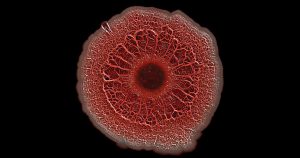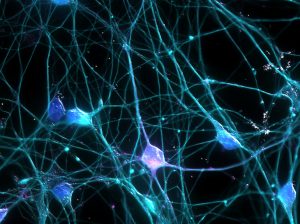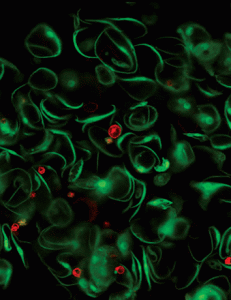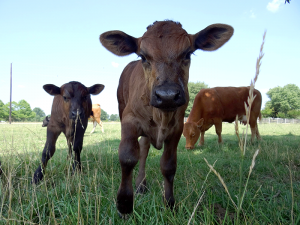Enter your address to receive notifications about new posts to your email.
Articles tagged G3 Journal
(248 results)
-
Clues to the innate drug resistance of a cocoa-fermenting pathogen
At first glance, the yeast Candida krusei seems as innocuous as microbes come: it’s used for fermenting cocoa beans and gives chocolate its pleasant aroma. But it’s increasingly being found as a pathogen in immunocompromised patients—and C. krusei infections aren’t always easy to cure. This yeast is naturally resistant to fluconazole, a first-line antifungal that’s…
-
An extra chromosome that does double duty
Inheriting an extra chromosome can sometimes be disastrous, but in the September issue of G3, Linder et al. investigate a chromosome duplication that helps yeast survive harsh conditions. Yeast with an extra copy of chromosome IV better tolerate hydrogen peroxide exposure, largely thanks to an extra copy of a gene that detoxifies the chemical. This…
-
Behind the cover: orchid bee genome
A green, iridescent bee perches on a pink flower, extending its proboscis to reach the sweet nectar inside. He’s not just after a meal—he’s also collecting fragrant substances to store inside his hollow rear legs. Later, he’ll buzz his wings to release the aroma with the hope of attracting a mate. The cover of the…
-
New in G3: orchid bees, worm sleep, and ghostly fish
Check out the September issue of G3! Table of Contents Genome Reports Whole Genome Sequence of the Heterozygous Clinical Isolate Candida krusei 81-B-5 Christina A. Cuomo, Terrance Shea, Bo Yang, Reeta Rao, Anja Forche G3: Genes, Genomes, Genetics September 2017 7: 2883-2889; DOI: https://doi.org/10.1534/g3.117.043547 The Nuclear and Mitochondrial Genomes of the Facultatively Eusocial Orchid Bee Euglossa dilemma Philipp…
-
Cause of neurological disorder in Belgian Shepherds discovered
Malinois dogs are working animals known for being used by the Secret Service to guard the White House. These dogs, a subtype of the Belgian Shepherd breed, are robust, with an average life expectancy of 10-12 years. But some puppies are afflicted by a genetic condition called spongy degeneration with cerebellar ataxia (SDCA). A puppy…
-
Switching biofilm formation on and off in yeast
When a group of microorganisms needs to stick together, they build a biofilm. The cells cement themselves together onto a surface, forming durable structures that are notoriously hard to remove. In a medical setting, biofilms can contribute to dangerous antibiotic resistance. In the August issue of G3, Cromie et al. use a yeast model to…
-
How the genetics of seizure susceptibility changes over time
Epilepsy is characterized by recurrent seizures, often with no immediately obvious cause. In the August issue of G3, Ferland et al. use a genome-wide association study in mice to show that after multiple seizures, the genetic basis of seizure variation shifts from previously identified genomic regions to new ones. This research shows that the genetic…
-
New in G3: Yorkie signaling, rice hybrid incompatibility, and a wasp genome
Check out the August issue of G3! Table of Contents Genome Reports Whole Genome Sequencing of the Braconid Parasitoid Wasp Fopius arisanus, an Important Biocontrol Agent of Pest Tepritid Fruit Flies Scott M. Geib, Guang Hong Liang, Terence D. Murphy, Sheina B. Sim G3: Genes, Genomes, Genetics August 2017 7: 2407-2411; DOI: https://doi.org/10.1534/g3.117.040741 Comparative Genomics of Two Sequential…
-
Lineage specific retrotransposons shaped the genome evolution of domesticated rice
Rice is one of the most important food crops on earth. Like many other plants, the genome of this critical global species is dominated by transposable elements—selfish genes that multiply themselves to the detriment of their host. In the June issue of G3, Zhang and Gao analyze the genomic long terminal repeat (LTR) retrotransposon content…
-
To make an embryo, you gotta break some mitochondrial DNA
Over twenty years ago, somatic cell nuclear transfer (SCNT) let scientists successfully clone the first mammal—Dolly the sheep. Despite advances since then, the efficiency of this process remains low. In the July issue of G3, Srirattana and St. John report a method to deplete cattle donor cells of mitochondrial DNA and efficiently generate blastocysts from…
-
Publish your software and data resources in G3!
Geneticists increasingly depend on highly specialized software and databases. Although it is vital to the field that these resources be well documented and their benefits widely disseminated, reports of new software and databases don’t always fit the mold of a typical research paper. The structure of a conventional research article forces authors to present their…

![Cocoa farmer David Kebu Jnr holding the finished product, dried cocoa beans ready for export. Image by Irene Scott/AusAID [CC BY 2.0], via Wikimedia Commons.](https://s36063.pcdn.co/wp-content/uploads/2017/09/Webp.net-resizeimage-12-300x201.jpg)
![Photo by publicdomainpictures.net. [CC0]](https://s36063.pcdn.co/wp-content/uploads/2017/09/red-doubledecker_770x-300x199.jpg)








